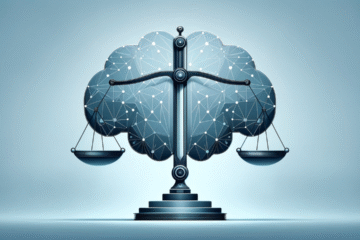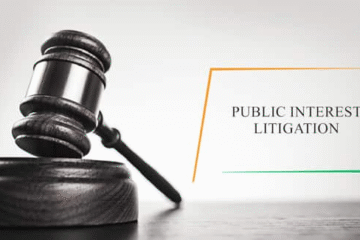
This article is written by Burdith Ann Pereira of 3rd semester of the University of Law College, Gauhati University, Guwahati, Assam, an intern under Legal Vidhiya
ABSTRACT
The article throws light on how the constitution came into existence and how the constitutional provisions with regards to education were introduced in India. The article also tells us the importance of education and briefly about how education could cater to the need for positive changes in the Indian Society.
Keywords: Right to Education, Constitution, Right of Children to Free and Compulsory Education (RTE) Act, Woods Despatch.
INTRODUCTION
A Constitution means a document having a special legal sanctity it sets the frame work and the principal function of the Organs of the Government of a state. The Constitution of India is the supreme law of India. The document lays down the framework that demarcates fundamental political code, structure, procedures, powers, and duties of government institutions and sets out fundamental rights, directive principles, and the duties of citizens. It is the longest written national constitution in the world.
It imparts constitutional supremacy (not parliamentary supremacy, since it was created by a constituent assembly rather than Parliament) and was adopted by its people with a declaration in its preamble. Parliament cannot override the constitution.
It was adopted by the Constituent Assembly of India on 26 November 1949 and became effective on 26 January 1950. The constitution replaced the Government of India Act 1935 as the country’s fundamental governing document, and the Dominion of India became the Republic of India. To ensure constitutional autochthony, its framers repealed prior acts of the British parliament in Article 395. India celebrates its constitution on 26 January as Republic Day.
The constitution declares India a sovereign, socialist, secular, and democratic republic, assures its citizens justice, equality, and liberty, and endeavours to promote fraternity. The original 1950 constitution is preserved in a nitrogen-filled case at the Parliament House in New Delhi.
HISTORY OF THE CONSTITUTION
The Britishers came to India in 1600 as traders in the form of The East India Company. Attracted by the stories of the fabulous wealth of India and fortified by the adventurous maritime activity of Elizabethan era Englishmen were eager to establish commercial contacts with the East. To facilitate such a venture some of the enterprising merchants of London formed themselves into a company. The company secured for it a Charter from Queen Elizabeth in December 1600, which settled its constitutions, powers and privileges. The Charter vested the management of the company in the hands of a Governor and 24 members who were authorized to organize and send trading expeditions to the East India. The Charter granted the company a monopoly of trade with the East. It had authority to keep an armed naval force for its security. The Charter was granted in the first instance for 15 years and was terminable on two years notice. It could be renewed if the interest of the Crown and the people were not prejudicially affected.
Fortified with the Charter, the Company started establishing its trading centers or factories at the several places in India. The first settlement of the company was at Surat (1612) which was established at a Royal “Farman” from the emperor Jehangir granting it land and concessions. This was followed by Musulipattam – Madras (1639) and later at Hariharpur in Mahanadi Delta (1690). Thus, in the course of time the factories at Bombay, Madras and Calcutta became the chief settlements or presidencies of the company. The administration of these presidencies was carried on by President and a Council composed of the servants of the company. During this period except in case of Bombay which had been ceded with full sovereignty to the British Crown wherever the Britishers settled they did so with consent of the Indian rulers. The natural consequences of their position would have been their submission to the local kings of the place but they managed to secure the permission of the local kings to retain their own laws. Concessions granted by the local rulers gradually established the company and the crown as territorial sovereigns in rivalry with other countries power and finally led the British Crown establishing its power.
The Britishers had been ruling India for fairly large number of years, throughout these years we can see how the power to rule India shifted from the hands of the East India Company to the British Crown until India finally attained her independence from the hands of the colonial rulers. This shifting of power from the hands of the company to the British crown underwent a number of Acts.
1947 to 1950 – The Framing of the New Constitution
The struggle for Independence was thus over by 15th August, 1947. But the attainment of independence was not the only hurdle to be crossed or get through with, the real task was to establish a democracy based on the ideas of justice, liberty, equality and fraternity; and framing the new constitution of India.
As provided by the Cabinet Mission Plan the Constituent Assembly came into being in November, 1946 with its members elected by the Provincial Assembly by indirect election. Out of 296 seats, the Congress had 211 seats and Muslim League 73 seats.
The Constituent Assembly was not a sovereign body but according to the terms of the Act of 1947 it became a sovereign entity. It was free to frame any Constitution it pleased and was free from the Cabinet Mission Plan.
The important figures of the Constituent Assembly were Jawaharlal Nehru, Rajendra Prasad, Sardar Patel, Maulana Azad, Dr. B.R. Ambedkar, and others respectively.
The first meeting of the Assembly was held on 9th December, 1946 as the Sovereign Constituent Assembly of India. The Muslim League, however, boycotted the assembly and there was an environment of uncertainty in spite of this the assembly made a progress by adopting the “Objective Resolution” which later became the Preamble of India. Various committees were appointed and reports of these committees formed the basis of the preparation of the first draft of the constitution.
On August 29, 1947, a Drafting Committee was set up under the chairmanship of Dr. B.R. Ambedkar. The Draft of the Constitution was published in January, 1948. The constituent assembly held 11 sessions to discuss about the new constitution and the draft was considered for 114 days. We can state that the Constituent Assembly sat for 2 years, 11 months and 18 days in all.
The New Constitution of India was adopted by the Constituent Assembly on 26th November 1949 and finally came into force on 26th January 1950. This day is also celebrated as Republic Day to mark the enforcement of the new Constitution of India.
HISTORY OF EDUCATION & THE CONSTITUTION IN INDIA
The Indian sub-continent is known for incorporating its traditional elements in teaching, be it mathematics or science. In ancient times teachings were mostly based on holy scriptures. In the medieval era Islamic teachings got introduced and with the coming of the Britishers western education was introduced in colonial India. The British bought many reforms in the Indian education system, the Woods Despatch Act was one of the notable one. However, with time India felt the need for educating its citizens and in order to keep the idea intact the Government of India also made Right to Education one of the fundamental rights.
ARTICLE 21-A
Article 21-A was inserted in the Constitution of India by the Constitution (Eighty-sixth Amendment) Act, 2002; to provide free and compulsory education to all children between the age of six to fourteen years, as a fundamental right. Article 21-A envisaged a legislation (The Right of Children to Free and Compulsory Education (RTE) Act, 2009) that represented under Article 21-A. It ensured that every child had a right to elementary education.
This Article and RTE Act came into effect on 10th April 2010. The words “free and compulsory” is used in the act. The word ‘free’ meant that no child shall not be liable to pay kind of fees which prevents him or her from completing or pursuing elementary education. ‘Compulsory’ education refers to mandatory act of the government or local authorities to ensure that every child between the age of six to fourteen shall be provided with proper elementary education and ensure attendance and admission.
The Right of Children to Free and Compulsory Education (RTE) Act, 2009 ensures:
- Till the completion of elementary education, the Right of Children to Free and Compulsory Education shall be provided,
- It defines the word ‘free and compulsory’,
- It has provisions for a child to be admitted according to appropriate class,
- It lays out specification regarding the governments role in ensuring elementary education,
- It also includes standards and norms about school and teachers working hours, students-teacher ratio, etc.
- It also mentions the qualification criteria of teachers to be employed
- It also has rules about prohibition of physical punishments, private tuition by teachers, mental harassment, etc.
- It provides for development of curriculum in consonance with the values enshrined in the Constitution, and which would ensure the all-round development of the child, building on the child’s knowledge, potentiality and talent and making the child free of fear, trauma and anxiety through a system of child friendly and child centered learning.
CONSTITUIONAL PROVISIONS FOR EDUCATION
Some constitutional provisions with regards to education are mentioned below:
- Free and Compulsory education for children of the age group between 6-14 years
- Article 30 of the Indian constitution relates to the educational rights ensured to the minorities.
- Article 29(1) states that any citizen having a distinct language, script or culture of its own, have the right to conserve the same.
- Article 350 B provides for the appointment of special officer for linguistic minorities to investigate into all matters relating to safeguards provided for linguistic minorities under the Constitution.
- The educational interests of the weaker sections of the Indian Community, i.e., backward classes of citizens and scheduled castes and scheduled tribes have been safeguarded by Articles 15, 17 and 46.
- India being a secular state does not interfere instead protects the right of educational institutions of religious institutions under Article 28.
- Article 29 ensures that no discrimination shall be done with any citizen based on any grounds with regards to education and that equal opportunity shall be provided to all.
CONCLUSION
We can never deny the fact that India’s ancient learning was a commendable one but with time India had to alter its education system. As for the modern times we see the urge and need to grow education system and spread out its roots to the remotest area of India. Talking about the most common issue that we face is the gender discrimination issue which we believe can be eradicated by education. The government is playing a major role in promoting the need for education. It also gives out schemes for education of the weaker sections of the society and also special schemes and provisions for tribals and other backwards classes. India can benefit a lot from education system, when people will get educated even the problem of unemployment will be solved to a great extent, people engaged in crimes will reduce crimes in a lot way. Education will cater to most of the needs of people. Education is the invisible wings that one can have to live a fully satisfies, respectful, dignified and proper life.
References
- https://en.wikipedia.org/wiki/Constitution_of_India/
- https://en.wikipedia.org/wiki/Constitution_of_India
- https://www.studocu.com/in/document/mahatma-gandhi-university/social-issues-in-india-indian-constitution/constitution-of-india/43196428/
- https://legalvidhiya.com/the-origin-and-evolution-of-the-indian-constitution/
- https://papers.ssrn.com/sol3/Delivery.cfm/SSRN_ID2017516_code1801817.pdf?abstractid=2017516
- https://ncert.nic.in/pdf/CWSN-FAQs.pdf
- https://epgp.inflibnet.ac.in/epgpdata/uploads/epgp_content/social_work_education/16._social_work_with_children_and_child_protection/01._evolution_of_child_rights_in_india/lm/6082_lm_01_lm.pdf/
- https://www.linkedin.com/pulse/right-education-act-2009-sravanthi-tanakallu-she-her-hers-
- https://decadethirty.com/blog/for-schoolchildren/constitutional-provisions-for-education-b-ed-notes.html




0 Comments